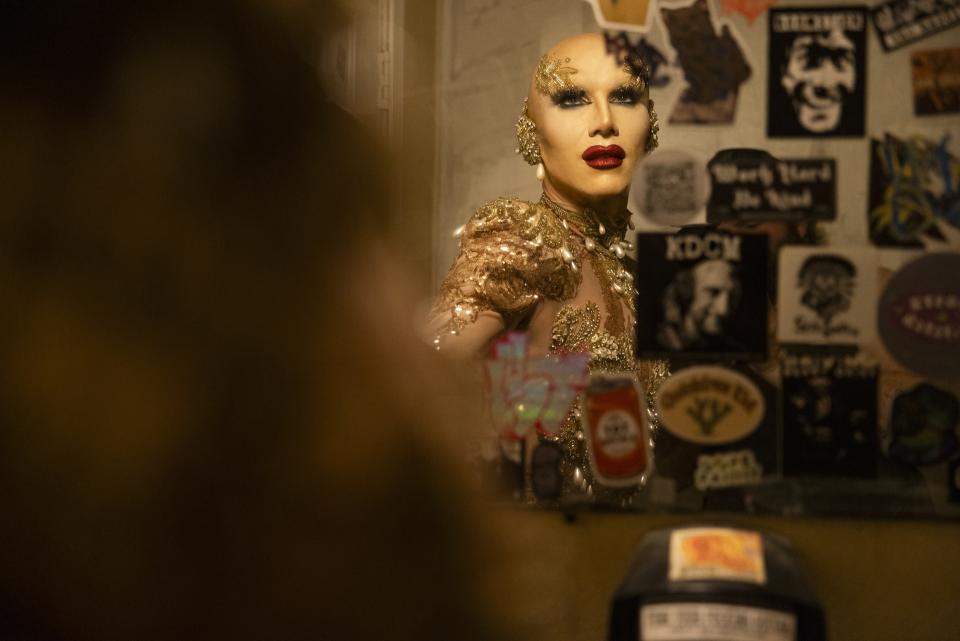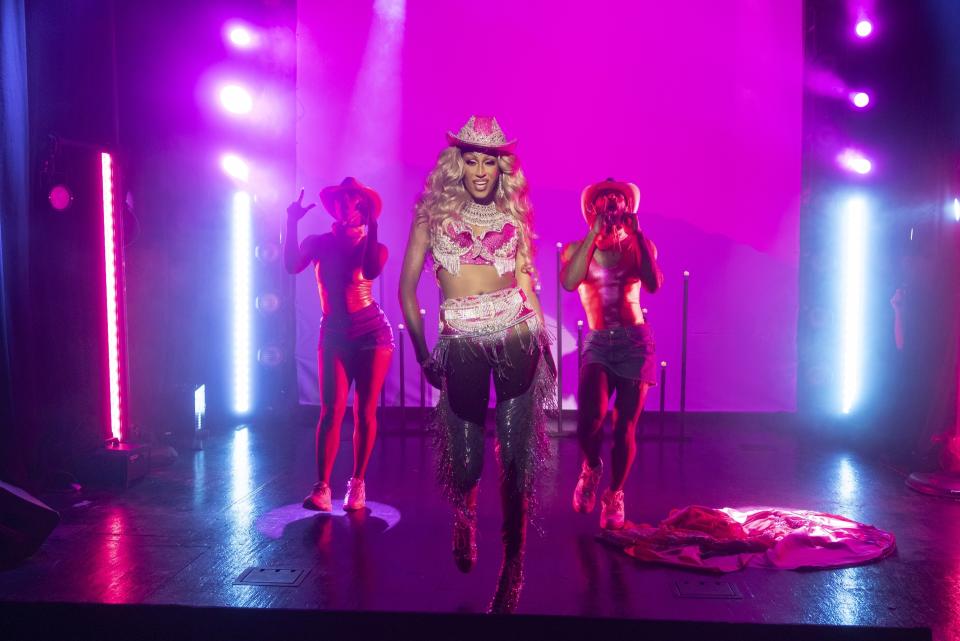For Season 4, ‘We’re Here’ Dug in Its Heels

Normally logistical issues like space rentals and permitting are meant to be invisible to the audience, left in the furthest background of any TV show. But Season 4 of “We’re Here” is as much about the struggles of making the series as it is about the drag performances the show’s queens put on in different parts of the United States. The HBO series not only introduced a new cast of queens this year but changed its filming approach so that it could go where it was needed most: the states imposing drag bans and making the pursuit of happiness difficult for their own LGBTQ communities.
The biggest shift, according to showrunner, director, and executive producer Peter LoGreco, was the amount of time that “We’re Here” spent in a given location. In past seasons, the series moved from state to state for each episode. But given how legislatively hostile the environments in Tennessee and Oklahoma were going to be for Season 4, it was important to really spend time in the communities the show went to. As a result, half of the season’s six episodes are in Tennessee, and the other half are in Oklahoma.
More from IndieWire
'Show-Chasers' Are the Latest Headache Streamers Have to Deal with - Study
'Kingdom of the Planet of the Apes' Will Celebrate Performance Capture in Blu-ray Release
“What we wanted to do here was to unpack the process [of finding locations and embedding in a community] because we felt like that process was so much a part of the story of what’s going on in the country and for the folks who are on camera. The only way to do that, in my opinion, was to actually allow the process to unfold with the cameras rolling,” LoGreco told IndieWire.
Accordingly, every episode of “We’re Here” this season has its new queens — Jaida Essence Hall, Priyanka, Sasha Velour, and Latrice Royale — talk through the limited performance options and safety concerns everywhere they go. It’s an edited summation, but it represents the months-long effort it took the show’s team to find places that would let them film. LoGreco said the fear of participating in Season 4 was pronounced compared to previous seasons.
“I think the large majority of folks in [previous] communities are just not engaged. They don’t have any serious, hardcore problem with queer people or with drag queens. You tell them, ‘Hey, we’d like to shoot in your restaurant or have a meeting here,’ and they’re like, ‘OK, yeah, that’s fine.’ But not this season because it’s become this political lightning rod,” LoGreco said. “They’re worried about how half the town’s population is going to react; they’re worried about whether people are going to boycott their business.”

That fear and that tension makes it all the more meaningful when “We’re Here” finds supportive venues and people in the communities they go to. LoGreco said the season was full of pleasant surprises that couldn’t have been predicted in advance over Zoom. In the run-up to filming, the most valuable thing was having producers on the ground, talking with folks and checking out the vibes.
“You need to walk around and pop your head into places and see how people react to you,” LoGreco said. “I think sometimes people think about nonfiction as being a situation where you just show up and run and gun and what happens happens — and we want the spontaneity. But I think in this case, it also requires a lot of thought so that you’re stepping into the right situations safely.”
Safety this season also included many more professional safety assessments and the support of plain-clothes escorts whenever the cast appeared in drag. LoGreco gives the queens a lot of credit for being willing not only to talk through the logistical and legal hurdles on camera but also to film with a leaner crew than in previous seasons.

“Drag is glamorous and fabulous and all of those things. So there’s always a tension between how big versus how lean and agile we’d like to be. And I think by necessity and with the tremendous, generous cooperation of Priyanka and Sasha and Jada and Latrice, we did go much, much leaner,” LoGreco said. “There’d be one or two people there to back them up and make sure that they looked right. We still had our cameras, but we were much leaner and meaner across all of these shoots.”
LoGreco said that it helped that “We’re Here” has always embraced a handheld visual style — not only to move with the queens but also to be less intimidating to the people who might have a problem with the show. But the show did find something particularly joyous about adopting an even more agile shooting style. There’s a human touch to the performances that sits alongside the glamor — which feels like the most powerful statement “We’re Here” can make about drag. It’s put on by people, and it’s a lot of fun for people.
Celebrating personal expression and queer joy is “such an inherent part of the DNA of drag,” LoGreco said. “When we started the show, there were many more setpieces that were designed to show that in a more structured way. And I think, for all of us, we wanted to embrace the challenge of letting real life offer you those moments, taking more time with each of the participants and with the community for those moments to crop up.”
New episodes of “We’re Here” premiere every Friday on HBO and stream on Max through the season finale on May 31.
Best of IndieWire
The 13 Best Thrillers Streaming on Netflix in May, from 'Fair Play' to 'Emily the Criminal'
The Best Father and Son Films: 'The Tree of Life,' 'The Lion King,' and More
The 10 Best Teen Rebellion Films: 'Pump Up the Volume,' 'Heathers,' and More
Sign up for Indiewire's Newsletter. For the latest news, follow us on Facebook, Twitter, and Instagram.


